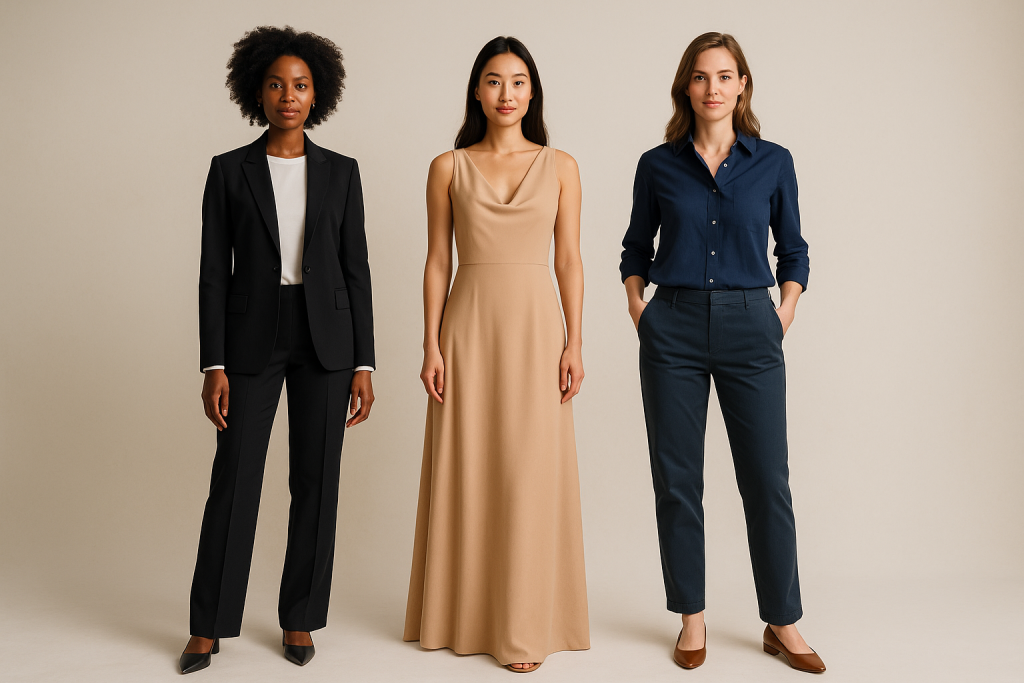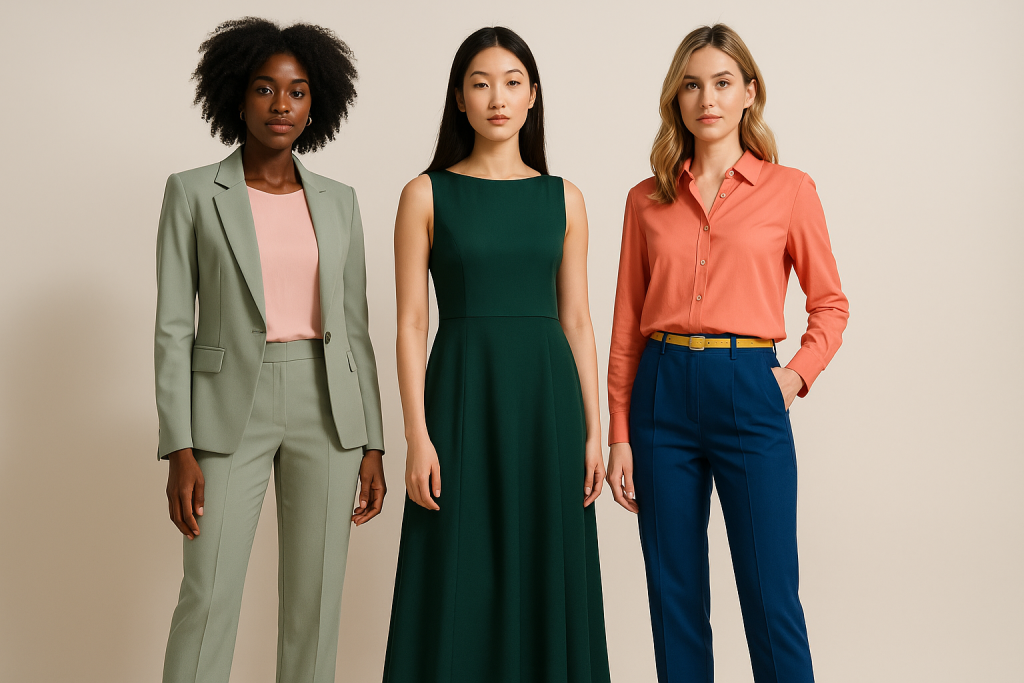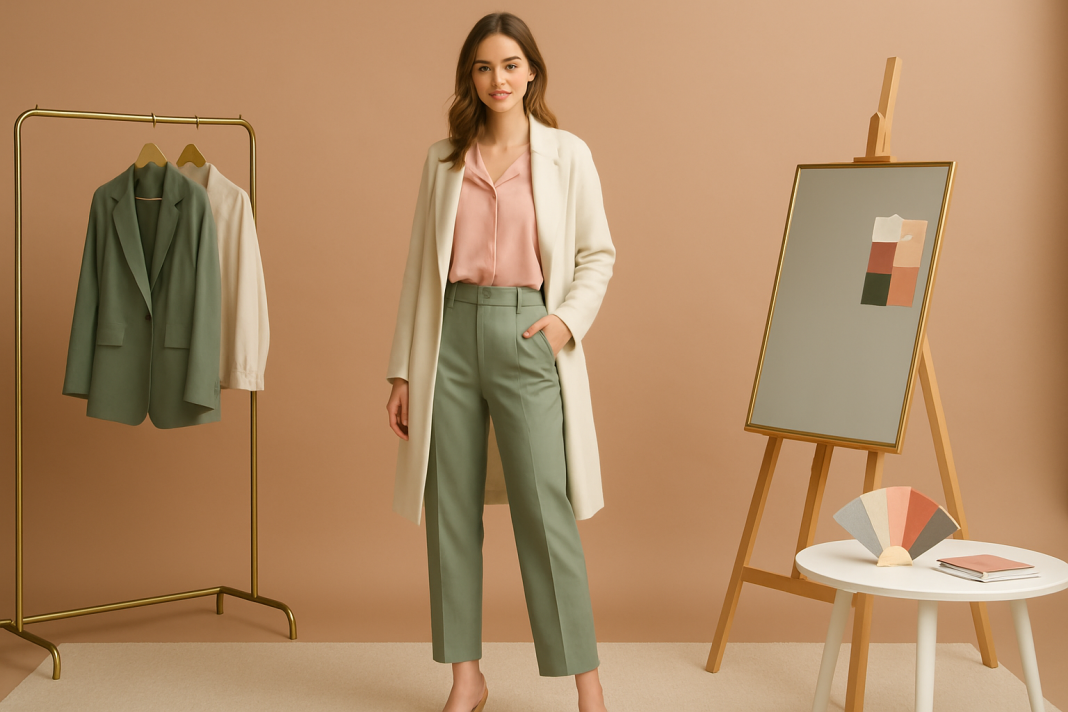Hey you 👋
If you’ve ever stood in front of your closet thinking, “Does this even match?” – you’re definitely not alone. As a fashion stylist, I hear this from clients all the time:
“I love color, but I never know how to wear it without looking like a walking crayon box.”
And guess what? That hesitation is totally normal.
Color pairing can feel confusing, especially with all the shifting trends and Instagram-perfect outfits out there. But here’s the truth: you don’t need to be a fashion expert to match colors confidently. You just need a few clear, easy-to-follow principles (and a little bit of playfulness).
In this post, I’ll walk you through how I approach color coordination in real life, no guesswork, no color wheel anxiety, and no cookie-cutter advice. Just relatable, practical tips you can use to instantly elevate your style.
Why Color Pairing Matters More Than You Think
Here’s the thing: the right color combo can take a basic outfit and turn it into a total statement. It can make your skin glow, boost your mood, and completely change how you show up in the world.
Color is one of the quickest ways to express your personality, and when you start pairing with confidence, people will notice, even if you’re wearing the simplest outfit.
The 3 Easy Color Pairing Rules I Live By
Let’s ditch the complicated color theory and start with what works IRL.
1. Start with a “Grounding Neutral”

Every great outfit needs a foundation. I call this your grounding neutral, a color that balances out everything else.
Some examples:
- White, black, or grey (classic go-tos)
- Beige, tan, camel (great for softer tones)
- Navy, olive, or muted denim blue (perfect for more colorful pairing)
👉 Pro Tip: If you’re new to color, pair just one bold or fun shade with a grounding neutral to ease into it. Think: olive pants + lavender top or camel blazer + teal dress.
2. Match Color “Moods” Instead of Exact Shades

Forget trying to match the exact same pink across your shoes, shirt, and bag. That’s exhausting, and honestly, kind of outdated.
Instead, try pairing colors that feel like they belong in the same mood family:
- Soft tones with soft tones (sage + blush pink + cream)
- Rich tones with rich tones (burgundy + forest green + gold)
- Bright tones with bright tones (coral + cobalt + lemon yellow)
This approach gives your outfit depth and harmony without looking too try-hard.
3. Use the “2 + 1” Method
This is my favorite stylist trick for color balance: Pick two colors that harmonize, then add one pop or contrast.
Let’s break it down:
- Example 1: Navy (neutral) + rust (warm tone) + soft mustard (pop)
- Example 2: Charcoal grey (neutral) + dusty rose (accent) + white sneakers (fresh balance)
This gives your outfit dimension, but still feels intentional and polished. It also helps avoid that “I just threw on every color I own” vibe.
Need Inspiration? Try These Foolproof Combos
If you’re not sure where to start, here are a few color pairings that always work, even if you’ve never worn them before:
✴️ 1. Camel + White + Denim Blue
Clean, timeless, and great for everyday styling. Try a camel blazer with a white tank and straight-leg jeans.
✴️ 2. Olive Green + Lavender
Unexpected but soft and modern. Try an olive shirt dress with lavender accessories or a lilac cardigan over olive trousers.
✴️ 3. Navy + Rust + Cream
Chic, earthy, and great for cooler months. Try a navy turtleneck with rust trousers and cream ankle boots.
✴️ 4. Charcoal Grey + Soft Pink
Masculine meets feminine. Try a structured grey blazer with a silky pink top or sweater.
✴️ 5. Cobalt + Beige + Gold
Bold but balanced. Cobalt brings the drama, beige tones it down, and gold ties it all together.
But What About Patterns?
Great question. Here’s how I handle them:
- Stick to one bold pattern per outfit, then pull colors from the pattern to match your other pieces.
- For example, if you’re wearing a floral blouse with blue and coral, pair it with blue jeans and coral earrings.
- If you’re mixing patterns (stripes + florals, for example), make sure they share at least one color in common.
Color Confidence for Every Season
Let’s face it—seasonal color trends come and go. But your personal style? That’s forever.
So here’s a little cheat sheet for color energy by season, in case you’re feeling stuck:
| Season | Try These Colors |
|---|---|
| Spring | Lavender, peach, mint, light yellow |
| Summer | White, coral, denim blue, sandy beige |
| Fall | Olive, burnt orange, rust, burgundy |
| Winter | Navy, charcoal, emerald, berry red |
Remember, these aren’t rules—they’re launchpads. If you feel amazing in hot pink in the middle of December, go for it.
Final Thoughts: Wear What Lights You Up
You don’t need a color wheel or a fashion degree to build outfits that feel good and look incredible. You just need:
- A grounding neutral
- A little curiosity
- And permission to play with color again
Because here’s the truth: confidence isn’t about wearing the “right” colors, it’s about owning your choices.
So tomorrow morning, instead of asking “does this match?”, try asking:
💬 “Do I love how this makes me feel?”
That’s the real stylist’s secret.
You’ve got this 💛



